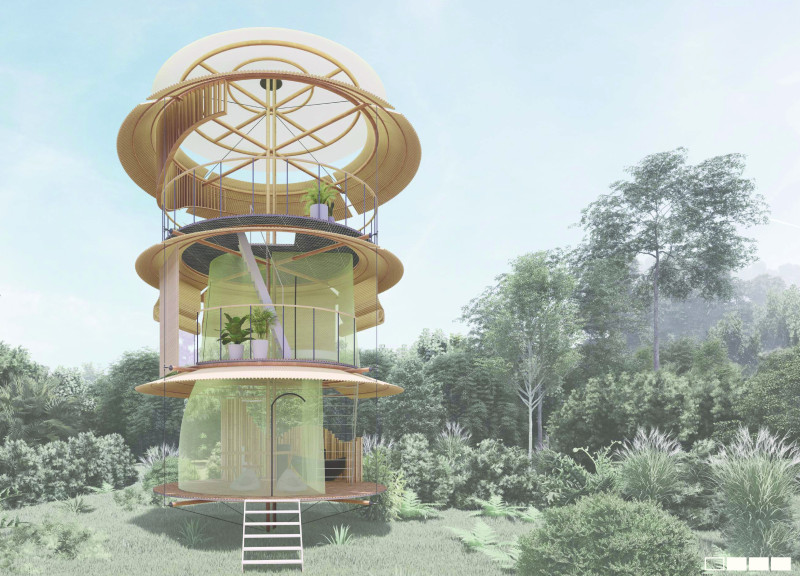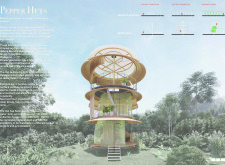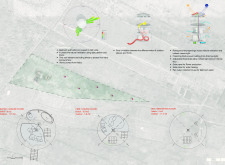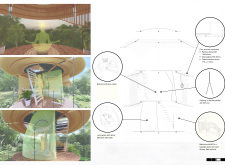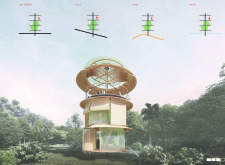5 key facts about this project
Pepper Huts is located within a pepper plantation, designed to respond to the specific needs of its tropical environment. The purpose of the huts is to offer a comfortable living space while dealing with the challenges posed by rain and sun. The design concept is centered on large roofs that shield the interiors, while lightweight structures allow for an effective connection with the outdoor surroundings. The result is a functional space that promotes natural ventilation and a sense of wellbeing.
Design Orientation and Layout
The layout prioritizes a thoughtful arrangement of rooms, with bedrooms and bathrooms placed on the north side to maximize airflow and light. This careful orientation creates a feeling of openness between indoor and outdoor areas, making it easy for residents to enjoy the natural environment. Open floor plans and lightweight partitions enhance comfort, balancing communal spaces with private areas.
Material Usage
The construction relies on bamboo poles and steel grating, both known for their strength and sustainability. Bamboo is particularly important, representing a commitment to using renewable resources. Its lightweight nature contributes to the overall design while offering structural support. Steel grating complements the bamboo framework, adding durability and maintaining the balance needed for the overall roof structure.
Sustainability Measures
Sustainability is a key feature of the design. Solar panels are installed for energy needs, providing residents with independence while reducing reliance on external power sources. A rainwater collection system is included to ensure a reliable supply of water for bathrooms. These elements make the design not only practical but also environmentally friendly, aligning it with modern standards of sustainability.
Interior and Exterior Integration
Pepper Huts promotes a close relationship between interior spaces and the natural environment. The design includes functional areas intended for social interactions as well as private moments. Large roof overhangs provide shade and comfort, while agricultural netting acts as protection against insects. This thoughtful integration enhances the living experience, allowing residents to feel connected to their surroundings while enjoying a sense of security in their living spaces.


